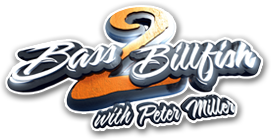What I appreciate most about Florida is the diversity of outdoor activities available to visitors and residents alike. One such activity is scalloping. Scalloping is a blast…it’s an easy and accessible pursuit and is perfect for families. It’s like an easter egg hunt, but the prize is tasty scallops. Here’s the lowdown on scalloping in Florida.
Scallops are widespread throughout their range, but can be collected only in the designated harvest zone determined by the FWC (website with regulations and harvest sounds at the end of the article.)
Popular areas to go scalloping include Keaton, Steinhatchee, Crystal River and Homosassa. I recently had the opportunity to try scalloping in Steinhatchee, a town in Florida’s Nature Coast. You don’t need a big boat to partake, all you need is a mask and snorkel.
The concept is simple. You jump in the water and weed through the grassy seabed until you see your prize. Sometimes the scallops will show you they’re white, fan shaped underbelly. Our captain referred to these as “gimmes.” Oftentimes the scallops are dark and olive colored, so they’re not easy to spot. Once you find a single scallop, look for groups in the area.. This i all about experience, once you determine patterns in the way the scallops appear on the seabed, you’ll be able to find more, filling your bucket quicker.
Some telltale patterns you need to look for:
- Sunny conditions are best. You will be able to see the scallops easier, and the scallops will gather on the top of the grass.
- Look for holes. The scallops will gather on the edge of potholes.
- Scallops have neon blue eyes. Oftentimes you can spot them by looking for their eyes.
- Put your head down and swim, while weeding through the eelgrass.
Here’s what you need to get in on the scallop action. Firstly, a dive mask and snorkel along. Fins are optional, but are a big help. You’ll need a mesh bag to carry scallops once you find them. Next, you’ll need a dive flag for the boat, this should be attached on the end of a PVC pole so that it’s visible. You’ll need a shucking knife… it’s best to put scallops on ice immediately after you harvest them. You will need a saltwater fishing license, nonresidents can purchase a short time license. The current FWC regulations dictate that you can harvest the following: 2 gallons whole bay scallops in shell, or 1 pint of bay scallop meat per person. Maximum of 10 gallons of whole bay scallops in shell, or 1/2 gallon bay scallop meat per vessel.
In Steinhatchee, I had the pleasure of heading out scalloping with Capt Tony Mathis from www.YKnotFish.com Uniquely to these areas that you can head out on a charter, targeting trout and redfish in the morning. When the weather heats up, you can head to the scalloping grounds to cool off. Another area that has great scalloping is Crystal River. I stay at the Plantation on Crystal River(www.plantationoncrystalriver.com) and head out with Capt. Clay Shidler (http://www.fishingcharterscrystalriver.com.)
Check the FWC site for the regulations and seasons, as this varies from county to county and regulations: www.myfwc.com/fishing/saltwater/recreational/bay-scallops.
For more information about scalloping in Crystal River visit http://www.discovercrystalriverfl.com/play/scalloping/
Sautéed Bay scallops
- Olive Oil
- 1 pound of fresh bay scallops
- Lemon Juice to taste
- Chopped fresh parsley
- Ground black pepper
Heat olive oil and butter until nearly smoking in large sauce pan. Add the scallops t the sauce pan when the scallops are gently browned, either toss them or flip over with a spatula. When both sides are browned. Place scallops on a serving platter. In the same pan, heat up more butter, add in parsley and lemon juice. Pour the mixture over the scallops.
